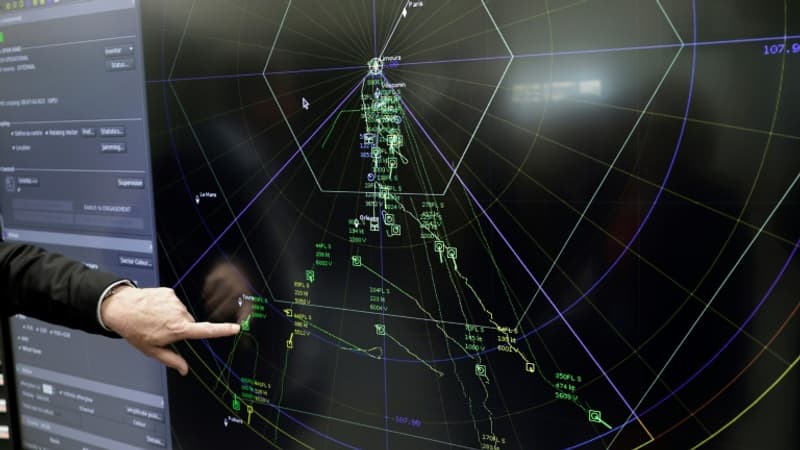Up to 10,000 times more efficient and smaller: in its laboratories near Paris, Thales shapes future quantum instruments for the battlefield, such as navigation systems capable of guiding airplanes and drones without GPS or antennas that could facilitate the detection of nuclear submarines. They use the properties of quantum physics, the theory that describes phenomena on the infinitely small scale.
Thales, who compares the global breed for Quantum to conquer the space, seeks in particular to apply these technologies to the sensors, one of its flagship segments. The group is aware of accusing “probably several years late” in quantum sensors, much more precise and sensitive. The company also invests in quantum communications, more resistant in data piracy, an area where China directs dance, and less on the computer, where the United States is an undisputed leader.
Sarah Menouni, a doctoral student at the Albert Fuente Laboratory in Palaiseau, presents an antenna of a few centimeters capable of detecting electromagnetic fields at low frequencies, facilitating the location of submarines in diving. It would take a 600 meter structure for equivalent detection. Ultra-sensible and compact, the antenna will be tested in 2030 in the underwater environment and in space.
Miniaturization
In another laboratory, it is the miniaturization of the production of cold atoms, used in atomic watches, accelerometers and gyroscopes, which gives scientists difficulties. These are key elements for inertia electrical plants, which work without external signal (GPS). “We use laser light to cool the atom” at a temperature close to absolute zero, -273.15 ° C, Mathieu Dupont -Nivet, Thales engineer, emphasizes. The operation would normally require “an optical table with many components” often occupying more than a cubic meter. This is where integrated photonics arrives as a miniaturization solution.
They represent “a strategic asset for armies in terms of deep knowledge of the battlefield, protection against cyber attacks and the acceleration of design cycles,” abounds in Jean-Xavier Chanane, innovation and defense manager of the Atomic Energy Commission (CEA).
The returns of the Earth in Ukraine – massive use of drones and traffic jams – impose a new tempo on researchers. “We must ensure our communications in front of the piracy alerts of Russia. And the amount of struggles for Ukraine that concern Poland, the Baltic and Scandinavian countries and must go to Berlin, must worry in Europe,” says Carina Kiessling, physics and project manager of the Roland Berger Consulting Office. The quantum sensors that do not use GPS “will help make air flights and spaces safer than today,” he said.
Expensive technological jump
The progress of competitors is difficult to evaluate. The analysis of patents and scientific publications are the only indicators, but the United States has stopped presenting patents in 2020, which suggests important advances or abandonment of programs.
“In Europe, we do not have technological giants such as GAFAM (Google, Apple, Facebook, Amazon and Microsoft) or IBM, leader on the quantum computer,” to feed these technologies “and” we depend a lot on risk capital and the state, “he adds.
However, the European Union remains “the second public taxpayer of quantum technologies” after China and the fact that Donald Trump dedicates less money to research is “an opportunity for Europe”, kill Carina Kiessling. The French Minister of the Armed Forces, Sébastien Lecornu, said at the beginning of July that “defending strategic autonomy in quantum [allait] Ask both effort and the gaullists were able to do in the 1960s for the atom. “
Source: BFM TV


